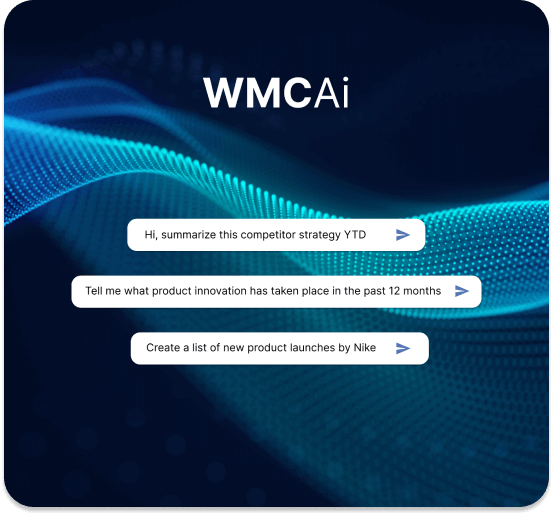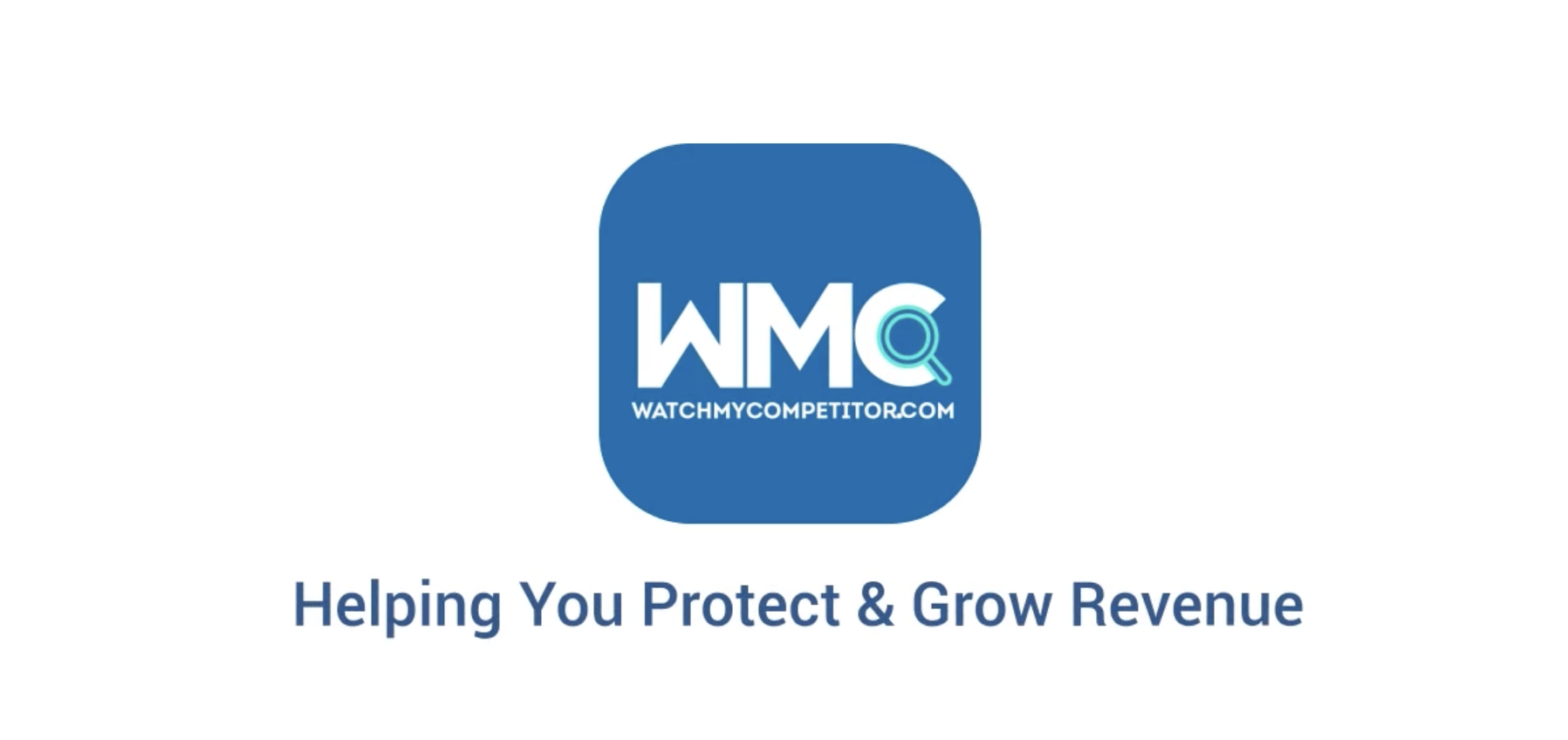According to reports, organisations spend around $10,000 per employee on SaaS products every year. Of that, 33% are barely used. While, according to another report, the average waste per company on SaaS products is over $135,000 annually.
One area of investment is competitive intelligence, with more than half of organisations prioritising gaining a competitive advantage. Yet despite the investment, businesses are analysing just 12% of the available data.
So how do you ensure any investment in competitive intelligence is the right one, so that you can avoid wasting resources? And how do you ensure you’re getting the most value from the tools you use?
We’ll answer those questions and more in this guide to choosing the right competitive intelligence solution. But before we do, let’s clarify what we mean by the term.

What Are Competitive Intelligence Solutions?
Competitive intelligence solutions are tools that offer businesses invaluable insights into market trends, competitor actions and customer preferences.
These tools provide a deeper understanding of the ever-changing business and competitive landscape. The role of these solutions is to gather, analyse and present data from diverse sources, giving decision-makers a competitive edge.
The competitive intelligence market was valued at $41.2 million in 2020 but is expected to have doubled by 2027.
Types Of Competitive Intelligence Solutions
A wide array of competitive intelligence solutions exists in the market. Understanding the different types can help you identify the one that best suits your business. Here’s a breakdown of the types of competitive intelligence solutions available:
A) Market research
Market research has played an important role in competitive intelligence over the years. It offers an opportunity to find out answers to key questions, such as how customers think, feel and talk about products and brands in the market. The research may take the form of a periodic report, conducted by a reputable third-party, or it could be something carried out in-house.
In either case, market research typically concludes with a detailed report analysing the data gathered and identifying opportunities, threats and trends that enable organisations to adapt their strategies.
B) Social media monitoring
Social media platforms have become a goldmine of information for competitive intelligence. Social media monitoring tools track competitors’ social media accounts and interactions. They provide insights into engagement strategies, customer sentiment, emerging trends and the effectiveness of competitors’ online marketing efforts.
Monitoring social media is a valuable part of modern competitive intelligence practices.
C) News alerts
Staying informed about competitors and industry developments is a fundamental aspect of competitive intelligence. News alerts, delivered through various platforms, help businesses keep up with the latest updates and activities of their competitors.
These alerts ensure that companies are well-prepared to adapt to market changes and competitor actions promptly.
D) Competitive intelligence platforms
Competitive intelligence platforms have evolved as an all-encompassing solution for tracking competitors and the market in general. These platforms combine data from diverse sources, offering a comprehensive view of competitor activities.
They provide tools for data gathering, analysis and visualisation, streamlining the competitive intelligence process. Competitive intelligence platforms, especially those incorporating AI and expert human curation, are at the forefront of modern competitive intelligence practices.
E) Custom solutions
Some businesses opt for custom-developed competitive intelligence solutions tailored to their specific needs. These solutions can be highly specialised, focusing on unique data sources or analytical methods. Building custom solutions requires significant investment but can provide a competitive advantage.
Understanding Role Of AI In Competitive Intelligence
Artificial Intelligence (AI) has emerged as a game-changer in competitive intelligence. It revolutionises how businesses collect, process and analyse insights. Here are some of the ways it’s changed (and is changing) the approach:
1) Automated data collection
It used to be that organisations would task individual members of their team with the task of tracking competitor and market activity. This laborious task has thankfully been replaced by AI-driven competitive intelligence solutions, which automate the data collection process.
They can scan vast amounts of data from all publicly-available online sources, industry reports, competitor websites and more in real-time. AI automates data collection from various online sources, providing real-time information.
2) Data accuracy & consistency
AI algorithms are designed to reduce the human errors that are common with a more manual approach. They excel at data accuracy and consistency, ensuring that everything gathered is clean and reliable. This reduces the risk of making decisions based on outdated or incomplete information.
3) Real-time insights
AI’s ability to process data quickly results in real-time insights. Businesses can track developments as they happen, such as competitor activities, market trends and shifts in customer preferences.
Whereas market research reports present findings periodically, AI competitive intelligence solutions provide immediacy. This speed enables prompt decision-making, reducing response times and improving competitiveness.
4) Pattern recognition
AI can detect patterns, trends and anomalies within data that may not be apparent through manual analysis. These insights go beyond surface-level information and provide deeper, more actionable knowledge. By identifying hidden patterns, businesses can gain a competitive edge.
5) Market trend identification
AI platforms are adept at spotting emerging trends and shifts in consumer behaviour. This capability is vital for staying relevant and competitive. By staying updated on market trends, businesses can make informed decisions and tailor their products or services to meet changing market demands.
6) Efficiency & cost-effectiveness
Automation not only saves time but also reduces costs. AI-driven competitive intelligence solutions eliminate the need for extensive manual labour, cutting down on resource expenses. This efficiency allows businesses to allocate their resources more effectively, whether it’s investing in innovation or expanding their market reach.
Factors When Choosing Your Competitive Intelligence Solution
When selecting a competitive intelligence solution, various factors come into play, shaping your decision and ultimately impacting your business strategies.
Data accuracy
One of the primary factors to consider is the accuracy of the data provided by the intelligence solution. It’s essential that the information is up-to-date, reliable and free from inaccuracies. A high level of data accuracy ensures that your decision-making is based on reliable information.
Usability
Consider how user-friendly the solution is. An intuitive and easy-to-navigate interface helps you access, share and use the insights you’ve gathered faster, increasing their potential value. Training and onboarding should be straightforward, allowing your team to quickly adapt to the tool.
Cost-effectiveness
Assess the overall cost of the solution. While it’s crucial to invest in a competitive intelligence solution, you should also consider the long-term financial impact. Like any investment, the solution should offer a balance between cost and the value it brings to your business.
Scalability
Think about the scalability of the solution. As your business grows, so do your needs. Ensure the solution can adapt and expand to your evolving needs and challenges. Scalability is vital to maintain the relevance of the tool over time.
Integration capabilities
Evaluate how well the solution can integrate with your existing systems and tools. Smooth integration is essential to avoid disruptions in your workflow. The ability to combine your competitive intelligence solution with other business tools is a significant advantage.
How To Get The Most From Your Competitive Intelligence Solutions
To maximise the value of your competitive intelligence solutions, you need an efficient and strategic approach. Here are some practical tips to ensure you’re getting the most out of your investment:
1) Customise alerts & notifications
Most competitive intelligence solutions offer alerting features. Customise these alerts based on your specific needs. Set up triggers for significant events like changes in competitor pricing, product launches or shifts in market trends. Tailoring alerts ensures you’re only notified about information that directly impacts your business.
2) Continuous training
Invest in training for your team. Ensure they are well-versed in using the competitive intelligence tool effectively. Many solution providers offer training sessions or resources to help your staff become proficient in leveraging the tool to its fullest potential. Encourage user adoption and the regular incorporation of intelligence insights into your decision-making processes.
3) Benchmark & monitor key metrics
Establish key performance indicators (KPIs) to measure the effectiveness of your competitive intelligence efforts. Monitor metrics such as competitor awareness, data accuracy, response time to market changes, competitive insights depth and market share growth. These KPIs provide valuable insights into your intelligence strategy’s performance.
4) Feedback & continuous improvement
Gather feedback from your team and regularly evaluate the competitive intelligence solution’s performance. Make data-driven decisions by analysing the feedback and data you collect. Use this information to refine your strategies, enhance your analysis processes and adapt to changing business landscapes. The right feedback could help you grow your intelligence investment.
5) Cross-functional collaboration
Encourage collaboration between different departments in your organisation. Competitive intelligence is not just the responsibility of a single team. It should be a collective effort. Foster a culture of sharing insights and knowledge among departments like marketing, sales and product development. This collaborative approach ensures that competitive intelligence benefits the entire organisation.
6) Scenario planning
Use competitive intelligence to develop various business scenarios and strategies based on different competitive and market situations. Scenario planning allows you to be prepared for various outcomes and respond swiftly to changes in the business environment. It’s a proactive way to stay ahead of the competition and mitigate risks.
Concluding Thoughts
Now you have a clearer understanding of the competitive intelligence solution landscape, you can make an informed decision about how and where to invest. Just as digital technology has transformed how businesses operate and compete, AI will play a growing role in how businesses stay abreast of what’s happening in their market.
By choosing the right competitive intelligence solution, you can avoid waste and maximise the value of your investment.








